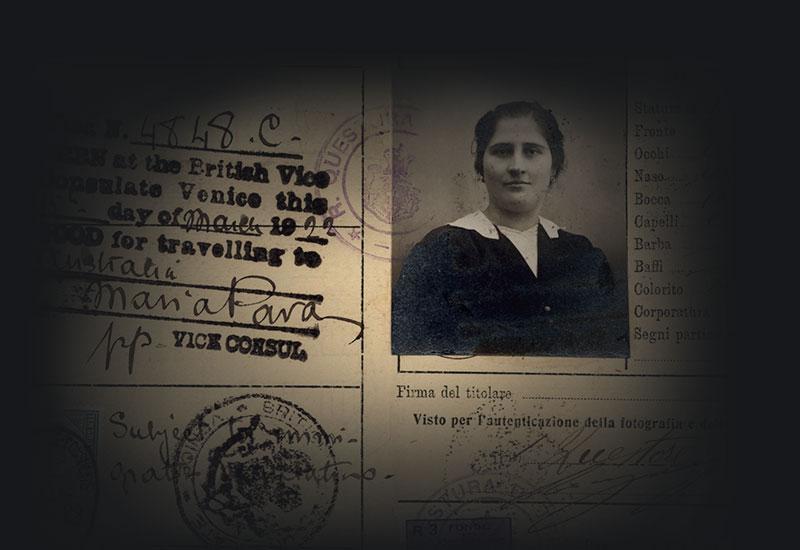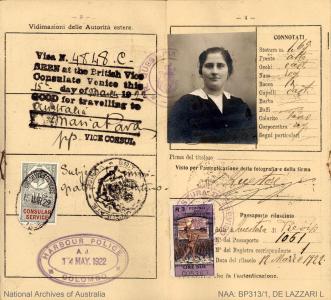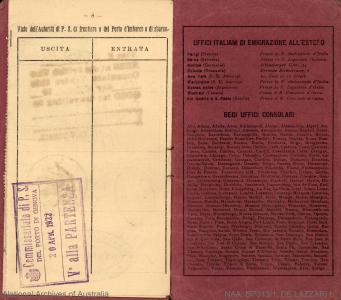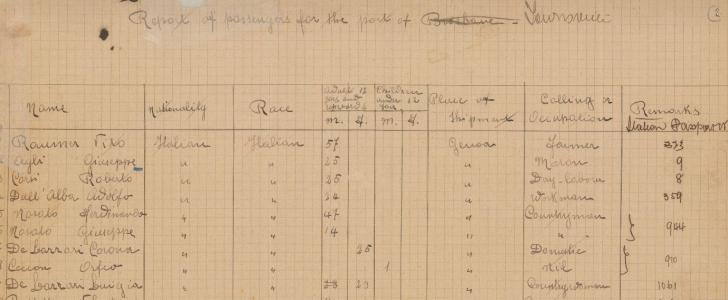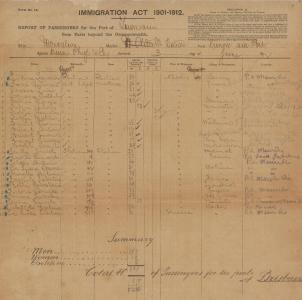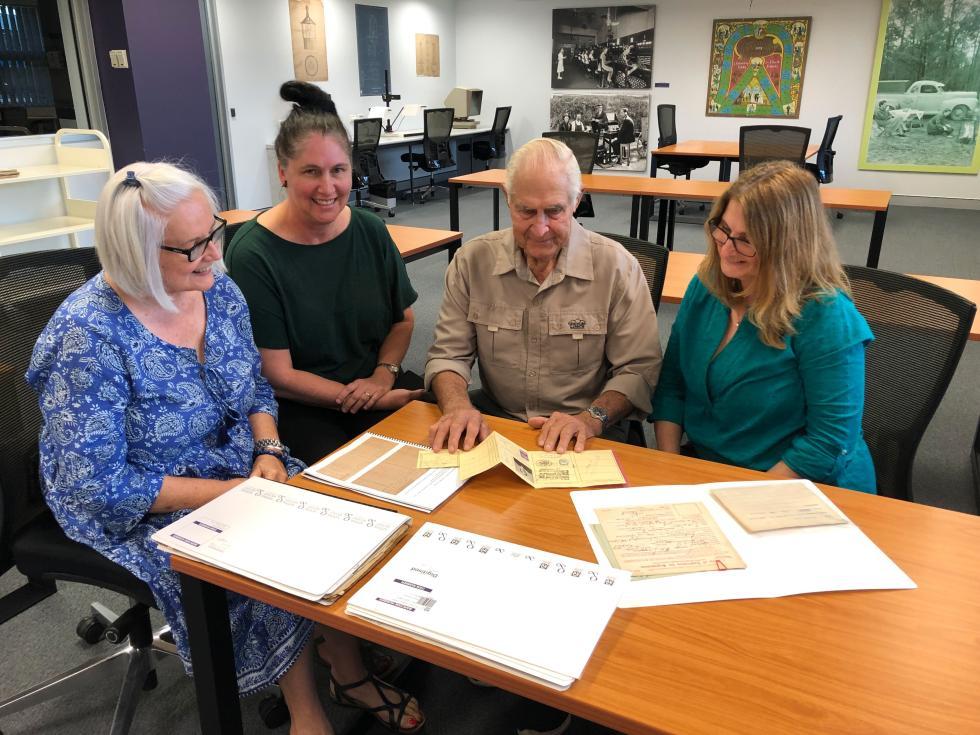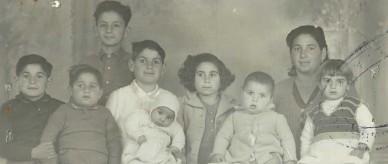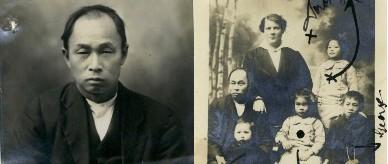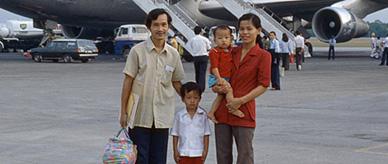On 20 April 2022, the Moro family visited the National Archives research centre in Brisbane to commemorate the day, 100 years ago, that their mother and grandmother left Italy for her journey to Australia. Luigia de Lazzari’s migrant story is one of thousands that can be found in the National Archives.
Preparing to leave Italy
Poor conditions in Italy following the First World War resulted in many Italians searching for work and a better life abroad. Luigia de Lazzari was the second eldest in a large family of 14 siblings. Her brother Luigi and aunt Caterina had migrated to North Queensland 2 years earlier in 1920. Once a person was settled in Australia, other family members would often come out to join them.
In preparation for her journey, 23 year old Luigia obtained an Italian passport on 12 March 1922. She presented her passport to the British Vice Consulate in Venice 3 days later, on 15 March, and obtained a visa ‘good for travelling to Australia'.

